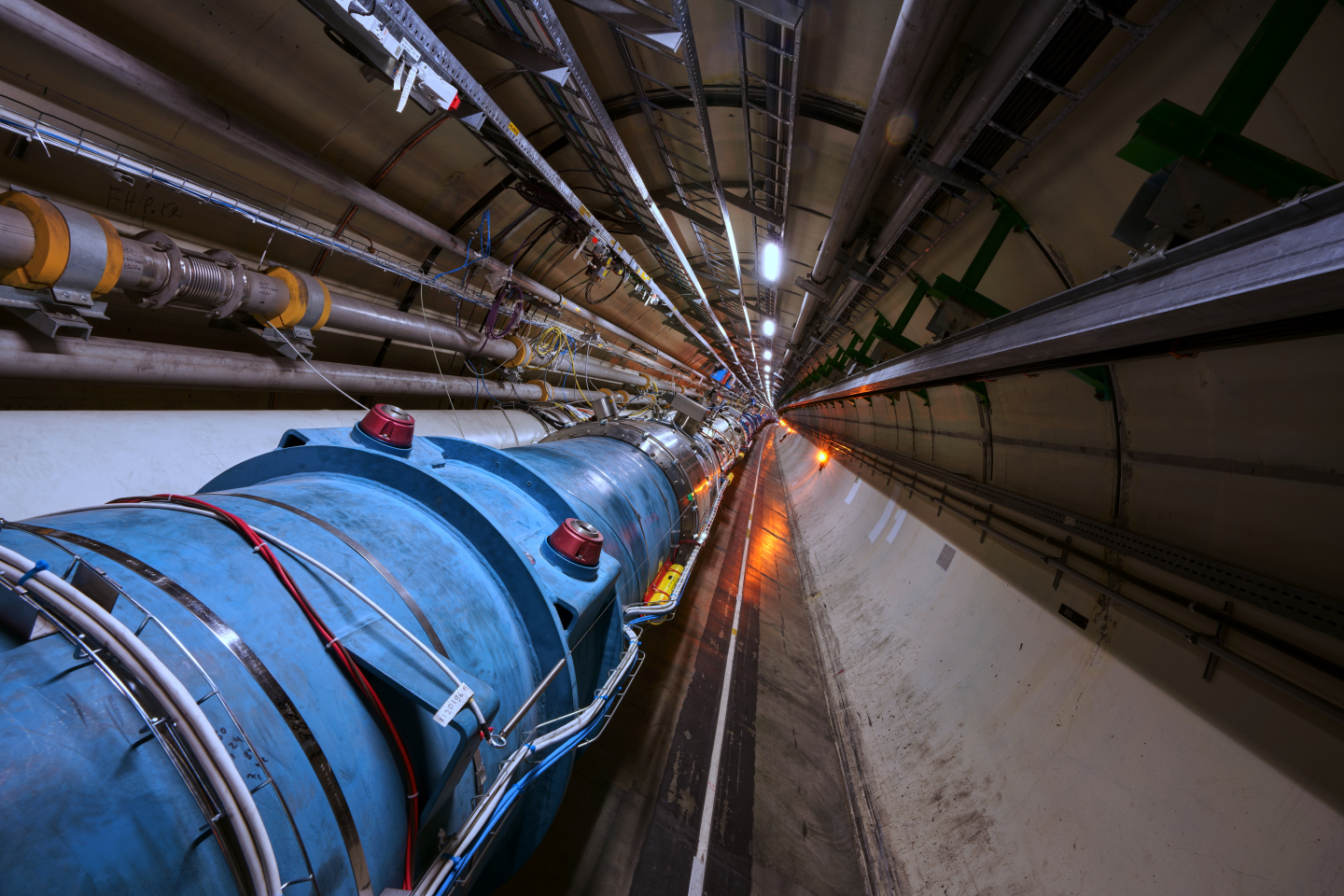Large Hadron Collider Just Spat Electron-ified Atoms to Almost the Speed of Light

Scientists working on the Large Hadron Collider (LHC) achieved yet another first Wednesday (July 25), revving full-blown atoms (with electrons oribiting them) up to near the speed of light.
The question of whether these were truly the first "atoms" that humans have accelerated to these speeds is a bit semantic; The LHC accelerates atomic nuclei of one sort or another all the time. (That's why folks sometimes call the giant machine, run by the European Center for Nuclear Research, or CERN, an "atom smasher.") But this is the first time those nuclei have had electrons orbiting them. In this case, CERN explained in a press release, the researchers accelerated lead nuclei, each orbited by a single electron, in a relatively low-energy beam for "about an hour."
Then they "ramped the LHC up to its full power and maintained the beam for about two minutes before it was ejected." [Photos: The World's Largest Atom Smasher (LHC)]
In a follow-up test, they maintained the full-power beam for two hours with a smaller group of atoms.
Michaela Schaumann, an LHC physicist, said in a statement that accelerating atoms with electrons is challenging because, "it's really easy to accidentally strip off the electron. ... When that happens, the nucleus crashes into the wall of the beam pipe because its charge is no longer synchronised with the LHC's magnetic field."
The multi-billion-Euro experiment has safeguards to protect itself, she said, so if a beam becomes unstable it automatically gets dumped in order to protect the LHC.
However, CERN said, the complex atom beams turned out to be more stable than expected. That's good news, Schaumann said, because it opens the door to a host of new experiments. The most interesting? Using the complex atoms as gamma-ray sources. When the electrons move from high- to low-energy states, they emit photons (light particles). And at the LHC's speeds, those photons would have the wavelengths and energies of gamma rays, which can be difficult to produce in a lab.
Get the Space.com Newsletter
Breaking space news, the latest updates on rocket launches, skywatching events and more!
Originally published on Live Science.
Join our Space Forums to keep talking space on the latest missions, night sky and more! And if you have a news tip, correction or comment, let us know at: community@space.com.

Rafi wrote for Live Science from 2017 until 2021, when he became a technical writer for IBM Quantum. He has a bachelor's degree in journalism from Northwestern University’s Medill School of journalism. You can find his past science reporting at Inverse, Business Insider and Popular Science, and his past photojournalism on the Flash90 wire service and in the pages of The Courier Post of southern New Jersey.










